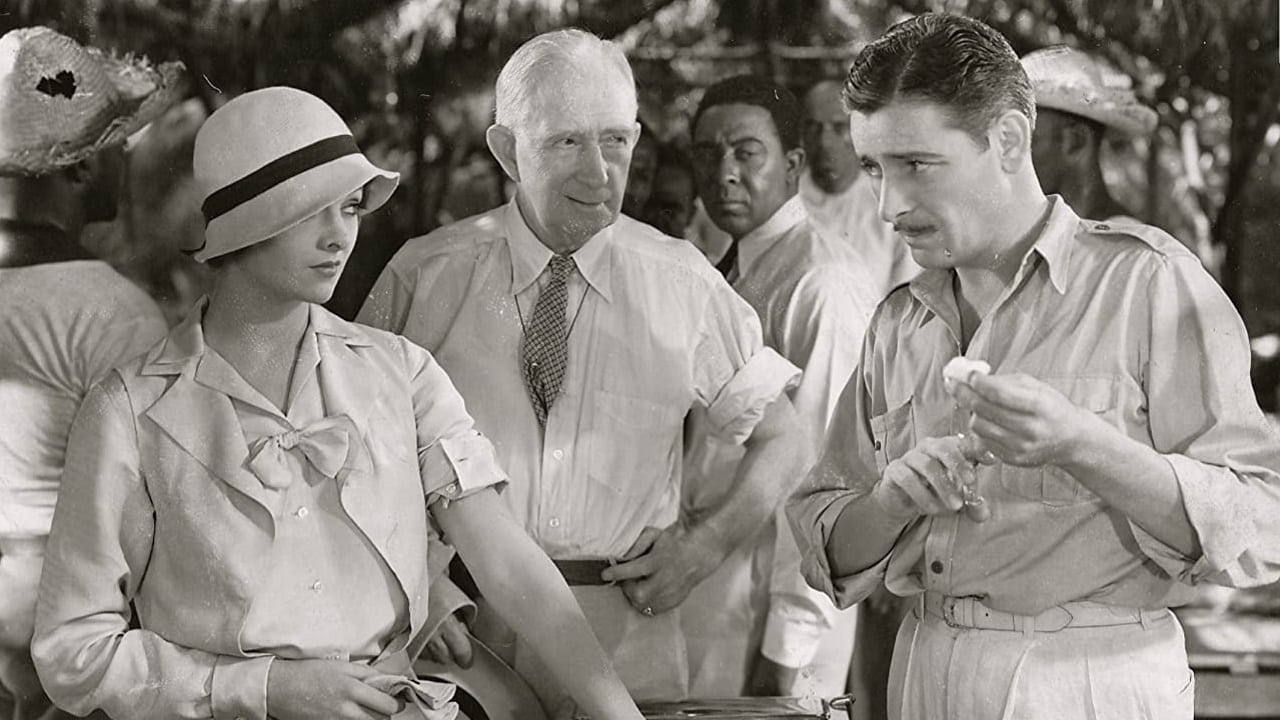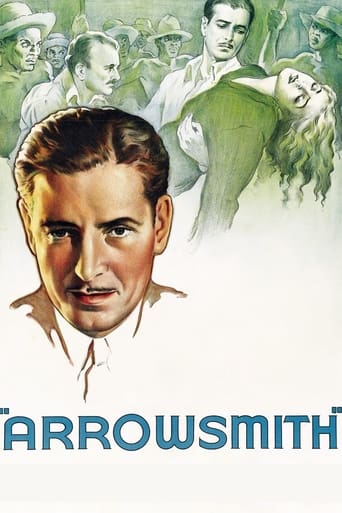

That was an excellent one.
... View Moren my opinion it was a great movie with some interesting elements, even though having some plot holes and the ending probably was just too messy and crammed together, but still fun to watch and not your casual movie that is similar to all other ones.
... View MoreThis story has more twists and turns than a second-rate soap opera.
... View MoreExactly the movie you think it is, but not the movie you want it to be.
... View MoreThe student of medical school Martin Arrowsmith (Ronald Colman) dreams on becoming a researcher. He seeks out Professor Max Gottlieb (A.E. Anson) that promises the position when Arrowsmith is an undergraduate doctor. Meanwhile Arrowsmith meets the nurse Leora (Helen Hayes) and they fall in love with each other. When Prof. Gottlieb invites Arrowsmith to work with him in New York, he declines since the salary is not enough to support Leora and him. He marries Leora and becomes a countryside doctor. After a while, the frustrated Arrowsmith decides to move with Leora to New York to work with Gottlieb. Soon he is invited to go to a Caribbean Island where there is an outbreak of bubonic plague to test a serum he has developed in the population and Leora decides to go with him despite the danger. Will Arrowsmith succeed in saving the inhabitants? "Arrowsmith" is a deceptive film directed by John Ford. The story seems to be incomplete missing explanation, for example, about Mrs. Joyce Lanyon, performed by the gorgeous Myrna Loy. The relationship between Arrowsmith and his wife is also underdeveloped. Ronald Colman is too old for the role of a young idealistic doctor. Maybe the viewer that has read the novel may like this film more than one that has never read it. Last but not the least, the Brazilian title is awful. My vote is five.Title (Brazil): "Médico e Amante" ("Doctor and Lover")
... View MoreArrowsmith has a lot going against it--principally that Ronald Coleman was too old for the part and had the wrong accent, and that John Ford (according to Helen Hayes's autobiography) edited the script down considerably during filming, leaving the story episodic and with context and motivation in some scenes unclear. That said, it's quite an interesting film. For one thing, it was made when Prohibition was still in force, and portrays the drinking culture of the time (Arrowsmith promising to take Sondelius someplace they can get a "real beer," the quite openly operating speakeasies) revealingly. It was pre-Code, too, and the striking, dialog-less scene in which Arrowsmith (married) returns to his room while Myrna Loy's character is obviously preparing to receive him next door, is quite sophisticated for Hollywood. Most impressive are the angular compositions and starkly lit, off-kilter shots with which Ford fills the Caribbean section of the movie. This was the period when Ford was absorbing lessons from German expressionist cinema (culminating a few years later with The Informer), and they help create the proper woozy atmosphere for an island in the grip of the plague. Even the truncated script helps, in a sense, lending the film a narrative unpredictability that leavens the rather sanctimonious story about an idealistic doctor sorting out his values. When Arrowsmith starts to lose control late in the film, we're just a few steps away from Dr. Frankenstein in his mountaintop lab--which would greet moviegoers just a short time after Arrowsmith premiered.
... View MoreWell OK this is NOT a real filmization of Sinclair Lewis' novel. Whether the fault is with the script, the director (John Ford), or the editing, we'll never know. But what is left is still a watchable film with attractive stars. Just don't expect Lewis' novel.Ronald Colman plays the idealistic hero (yes he's too old for the part), married to a down-to-earth woman (Helen Hayes). He battles the hypocrisy of research science funded by a huge foundation just as he battles the "bad science" of small town America, and the third-world conditions that foster epidemics (sounds relevant now).While the plot here is a mish mash, the performances are solid. Colman was a careful actor and seemed content to deliver his crisp diction without delving much into character. Hayes is quite good as the wife. Richard Bennett is excellent and steals the film as the Swedish doctor. Myrna Loy has a small role (that was apparently cut). Also on hand are John Qualen, Beulah Bondi, A.E. Anson as the skeletal Gottlieb, Russell Hopton, Bert Roach, Nora Cecil, Claude King, Adele Watson, and David Landau as the arrogant vet.
... View MoreThis film is truly atrocious! I am, by no means, an expert on "classic" films, but, I must say that I really disagreed with this film.The Sinclair Lewis novel is _way_ better than this film. Screenwriter Sidney Howard seems to have read the Cliff's Notes version of the book. He smashes the first 13 chapters or so into maybe 20 minutes. Most of the information in the novel is lost here, and I assume that the scenes would be a series of non-sequiturs for those who hadn't read the novel.However, the section detailing Martin's discovery of the "X Principle" (though probably not called this in the film; it is the bacteriophage) is decently done. I think that the utter chaos in Martin's life is portrayed as effectively as the miscast Ronald Colman (way too old to play the part of a young doctor) possibly could.Overall, I think that the film would be decent, barring background information of the novel. The film, however, has an entirely different message than the original work.
... View More